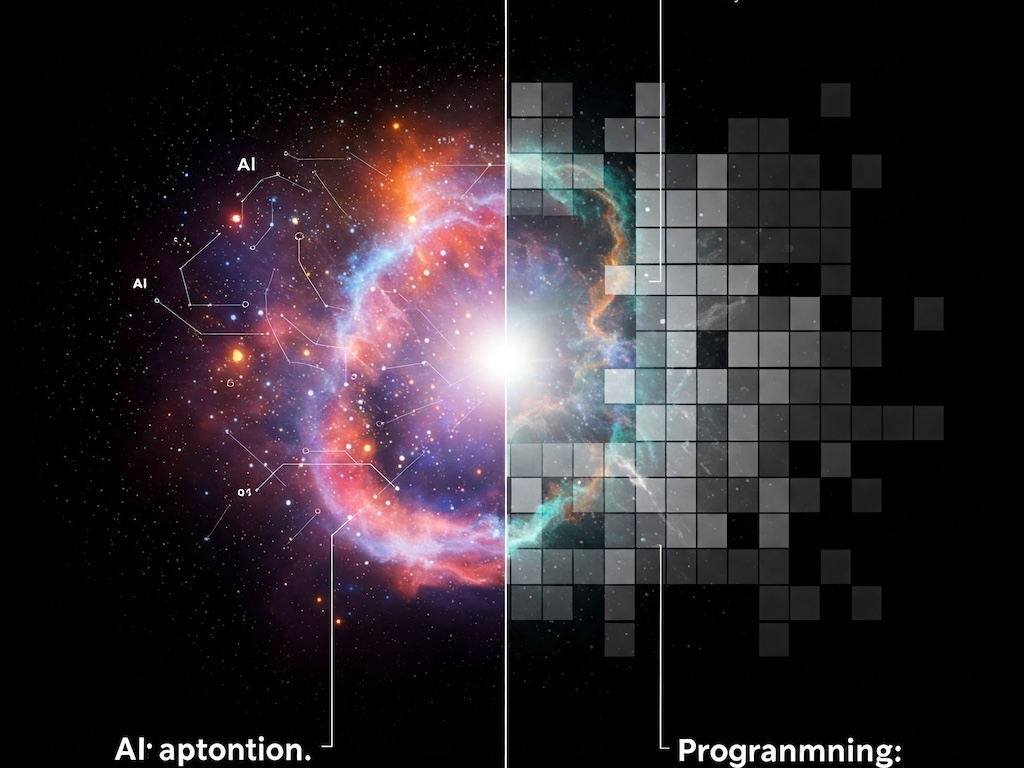
Programming vs. AI: What’s the Real Difference?
In the tech world, two major ways to make computers do what we want them to are programming and using AI. While both are powerful tools, they work in very different ways. To the average person, it might seem like they do the same thing—after all, both are used to get a machine to perform tasks. But understanding the difference can help clarify how we use each of them, and why one might be better suited for some tasks than the other.
What is Programming?
At its core, programming is giving a computer a set of specific instructions to follow. It’s like writing a detailed recipe where each step must be followed precisely. When you program a computer, you tell it exactly what to do, when to do it, and how to do it. If you’re building an app or a website, for example, you’re likely writing thousands of lines of code that specify how the user interacts with the software.
Think of it like telling a robot to make a sandwich. You would give it a list of actions: first, get the bread, then put on the peanut butter, followed by the jelly, and finally, place the two pieces together. Each step is clearly defined, and the robot can only make a sandwich if it follows the instructions exactly as written.
What is AI?
Artificial Intelligence (AI), on the other hand, is about teaching a computer to learn and make decisions on its own. Instead of writing specific instructions for every possible scenario, you train the computer to recognize patterns in data and then use those patterns to make decisions or predictions. This is like teaching a robot how to make a sandwich based on hundreds or thousands of examples of sandwiches. Over time, the robot learns what a sandwich looks like, how to put the ingredients together, and can even adapt to making different types of sandwiches based on new examples.
For instance, if you’re using AI to identify objects in an image, you don’t have to manually program it to recognize every single object like a dog, car, or tree. Instead, you feed it thousands of images with labels (e.g., "dog," "cat," etc.) and let it learn from those examples. The AI model will then be able to recognize similar objects in new images, even if it has never seen them before.
Programming: Step-by-Step, Clear Instructions
When you write code, you’re responsible for telling the computer exactly what to do in every situation. If there’s an issue—let’s say the computer gets stuck or doesn’t behave as expected—it’s your job to fix it by reviewing the code and adjusting instructions. You can anticipate all kinds of different cases and program for them ahead of time, but this also means that if something unexpected happens, your program might break, and it needs to be fixed.
In other words, programming is about building clear, logical, and predictable systems where the computer follows exact instructions without deviation. It’s great for tasks that are well-defined and where consistency is crucial.
AI: Learning and Adapting on Its Own
AI doesn’t require every action to be explicitly programmed. Instead, you feed the system lots of data, and the AI learns patterns from that data. This makes AI especially useful for tasks that are too complex for a set of rigid instructions. For example, AI is used in facial recognition, voice assistants, self-driving cars, and medical imaging—areas where there’s too much variation for traditional programming to account for every scenario.
In AI, if the system makes an error, you don’t typically go in and change the instructions. Instead, you adjust the model or provide more training data to help the AI learn better. It’s not perfect at first, but it improves over time, getting smarter as it encounters more examples.
Key Differences: Flexibility vs. Precision
The biggest difference between programming and AI lies in flexibility and precision. Programming is precise, predictable, and controlled—your instructions tell the computer exactly what to do. AI, by contrast, is more flexible and adaptive. It’s like teaching someone to figure out the best way to make a sandwich after trying many different versions, rather than telling them exactly what steps to follow each time.
Conclusion
Neither programming nor AI is inherently better than the other; they just serve different purposes. Programming is best for tasks that need clear, step-by-step instructions and consistency, while AI is ideal for tasks that require learning from data and adapting to new situations. Both are powerful tools in their own right, and understanding their differences can help us choose the right approach for the right task. Whether you need precise control or the ability to learn from experience, both programming and AI have their place in shaping the future of technology.
